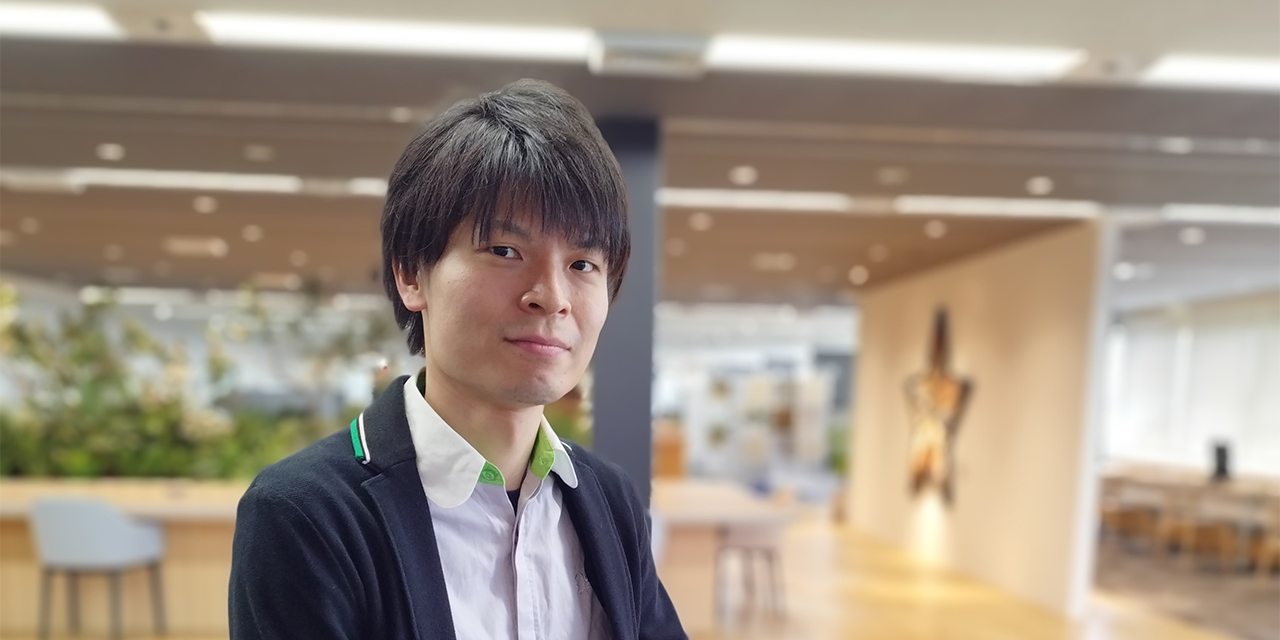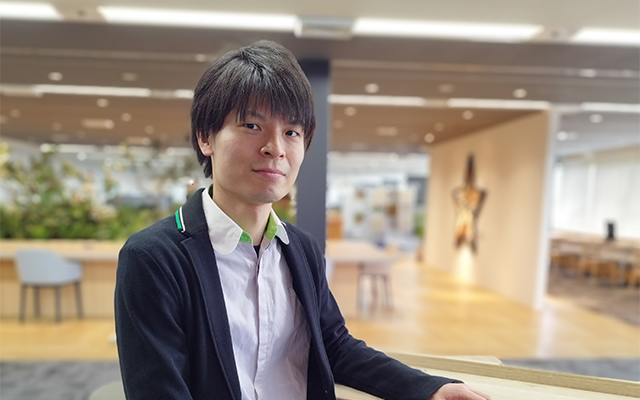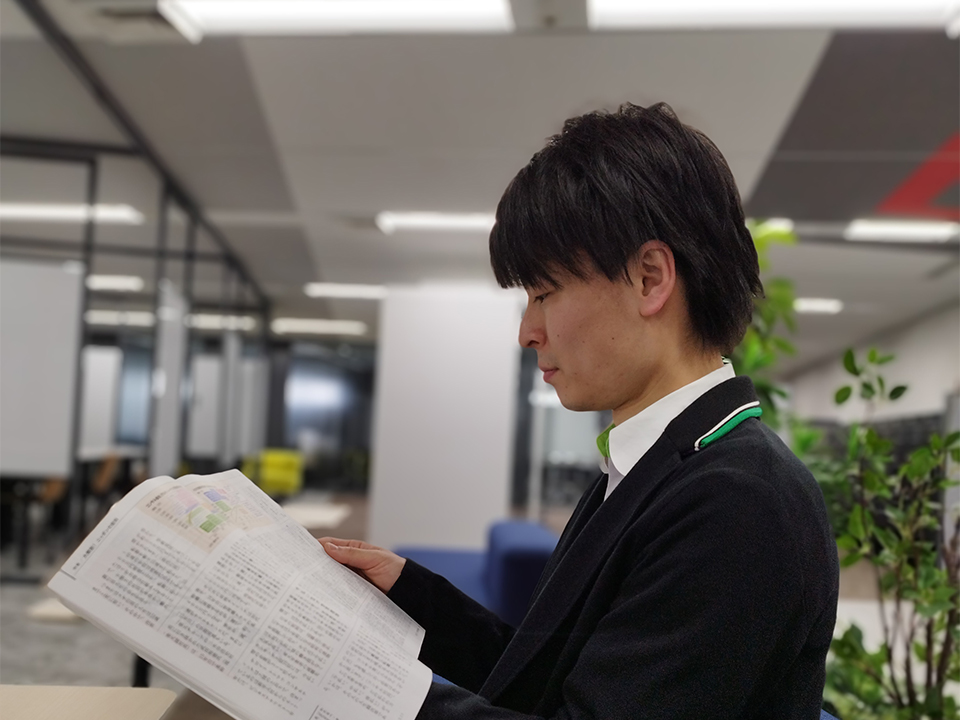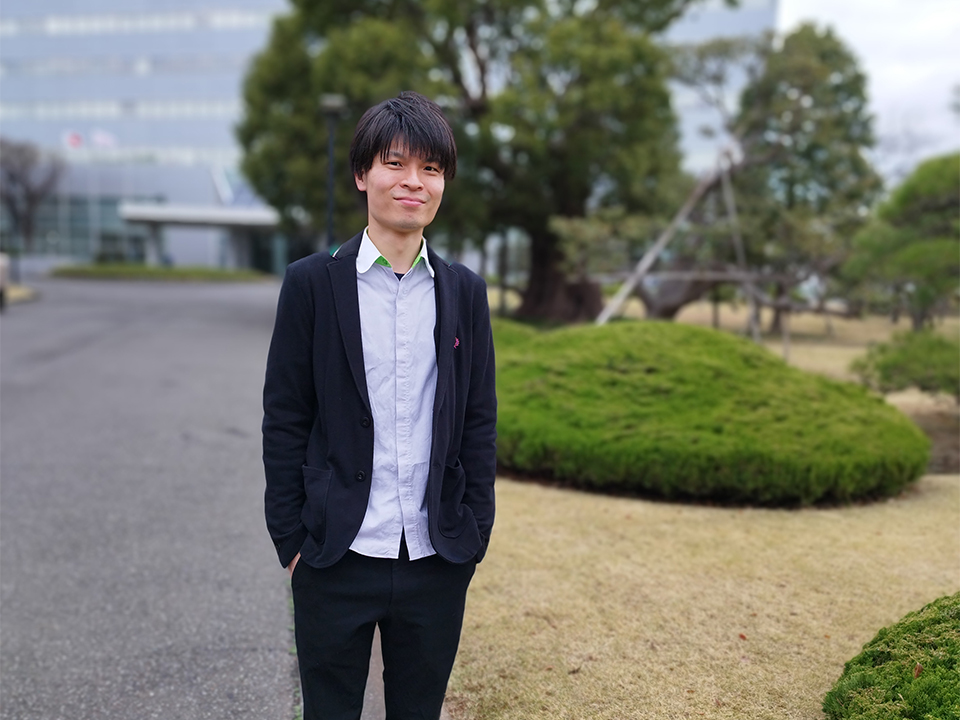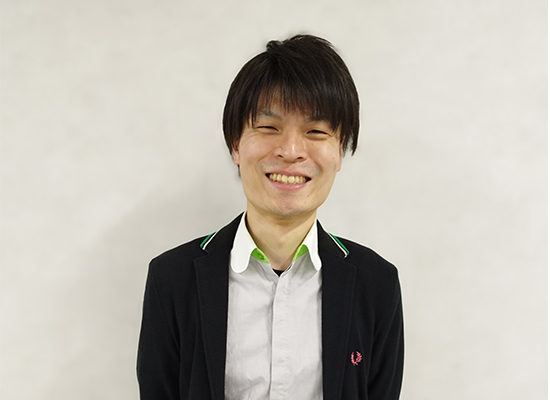Discovering a natural career path based on everyday life
Ever since I was a child, I have been good at sports, often playing with my friends.
Although I loved being physically active, my initial dream was to become a craftsman who made things by hand.
However, when I reached middle school, I discovered chemistry and found it fascinating.
Combining multiple compounds to create a new one felt like solving a puzzle and was hugely enjoyable.
When I entered high school, everyone around me was getting really excited about topics such as mobile phones and computers.
At that time, mobile phones had limited functions compared to today’s smartphones, but it was possible to customize ringtones and the screen wallpaper.
I also got hooked on customizing them and enjoyed changing the sound and design in various ways.
After that, I had more opportunities to use computers and became interested in how they work.
It was around the time when the internet was beginning to spread, and I was able to search for information easily and looked up many different things.
These interests and experiences kick-started acquiring a wide range of foundational knowledge about electronics and information at university.
A passion for solving the world’s problems
My research theme in graduate school was primarily in the field of acoustic signal processing.
Specifically, it was a technology called noise cancelling that actively controls and reduces noise, which is useful in solving noise problems caused by medical equipment and machinery in factories.
I conducted applied research while also listening to the opinions of those in the field and learning more about the challenges.
I also received feedback from stakeholders to improve the technology, and repeated the improvement cycle until the optimal technology was developed and applied in the field.
I really liked this approach!
By systematically applying the knowledge I learned and repeatedly receiving feedback to create the optimal technology, I felt a sense of accomplishment that the technology I worked on was solving real-world problems.
My desire to solve as many of the world’s problems as possible was my prime research motivation.
I worked hard on researching noise cancelling technology and wrote a paper (*1), which was published in a top journal in the field of acoustic technology.
While I was looking for a job that would allow me to use the expertise I had developed to make a positive impact on people’s lives, I came across Fujitsu, a customer-centric company, and decided to join the company.
A daily habit – reading research papers
After joining the company, I was in charge of developing technology to extract human behavior from surveillance camera images.
Previously, I had been researching the latest signal processing techniques for tasks such as improving sound quality, but I had little knowledge of the image recognition field.
I struggled hard to keep up with my senior colleagues.
But by asking the people around me questions and progressing with my daily work, I gradually started to learn the basics.
Even after work, I devoted myself to reading specialized books to deepen my knowledge.
Additionally, while working on the project by actually using my hands, I was able to improve my practical skills. Through this experience, I was able to build a baseline of skills that enables me to achieve a certain level of accuracy in image recognition, which also gave me confidence.
However, a new challenge suddenly appeared.
The next task assigned to me was research on image recognition utilizing deep learning.
Although it involved working with images just like my previous task, my skills in image recognition alone were not enough.
During meetings with stakeholders, I was acutely reminded of my lack of knowledge on deep learning.
As a result of this project, I made it a habit to read at least three research papers a day to acquire knowledge on deep learning.
Thanks to this habit, I was able steadily to deepen my knowledge on deep learning and contribute to the achievements of the entire project team by utilizing this knowledge.
The knowledge base I have built up, as well as my daily reading habit, continues to this day and has become my greatest asset.
Contributing to technology that supports the medical field
Through continuous learning and research, I have become a firm believer in new ideas and approaches based on innovative technologies being necessary to solve problems.
I am currently creating a new mechanism that incorporates various perspectives through discussions with team members and research paper investigations, in order to evaluate whether the current methods are truly optimal or whether there are better ways.
In addition, one of my goals is regularly to submit papers to academic conferences.
It involves thinking deeply about a topic in order to be able to output interesting content.
Interacting with other researchers can also lead to obtaining new ideas and discovering areas for improvement in research.
In order to pursue this and engage with other experts, I actively participate in academic conferences, such as becoming a member of the organizing committee.
In 2020, the COVID-19 pandemic swept across the world, putting a tremendous strain on the healthcare industry.
Medical professionals made great efforts to respond to the situation and provide treatment and diagnosis, but what became especially crucial was the early detection of COVID-19 pneumonia.
Even when the possibility of a COVID-19 infection is low, based on the patient's medical history and a negative result from a PCR test, COVID-19 pneumonia can still occur.
While chest CT diagnosis is a well-established method, diagnosing several hundred chest CT images for each patient requires careful visual inspection by a doctor.
Therefore, AI technology (*2) that supports doctors in image diagnosis has attracted attention, and I was presented with a research and development project in this area.
Toward a healthy and prosperous future for all
As the development request was urgent, the research period was short, only a few months, and I felt anxious about whether I could complete it.
However, by making full use of the available accumulated knowledge on images and deep learning, our team has succeeded in developing AI technology that supports efficient image-based diagnosis of COVID-19 pneumonia by doctors, and we have been able to realize a successful project conclusion.
I was filled with a real sense of achievement in having been able to create the necessary technology for myself as well.
While the joint research (*3) on AI technology to support the medical field that I am conducting is still in its early stages of development, it is definitely contributing to society.
Throughout my own research career, I have always strived to solve societal problems, and that goal remains unchanged to this day.
Currently, I am working on the development of early disease detection technology, aiming to create a society where more people can lead healthy daily lives.
Importantly, I want to share my knowledge and methods proactively with others through papers and results.
I regard this as my personal mission, and it is something I will continue to challenge myself heart and soul.

